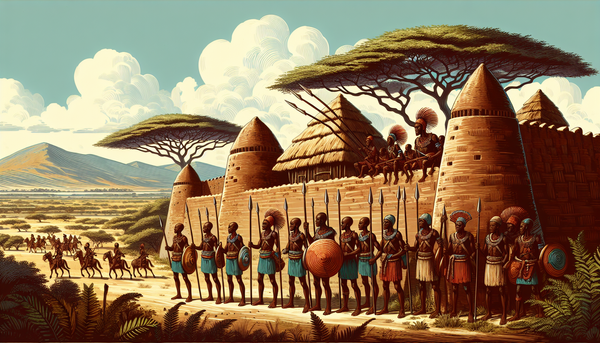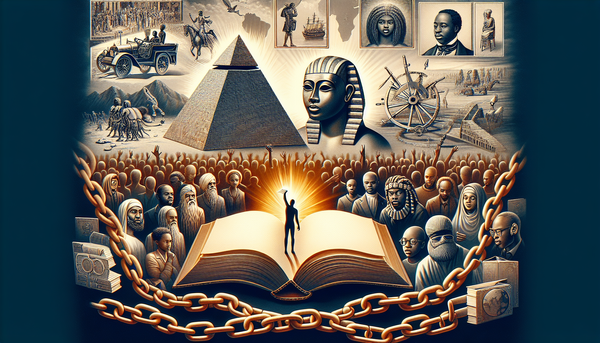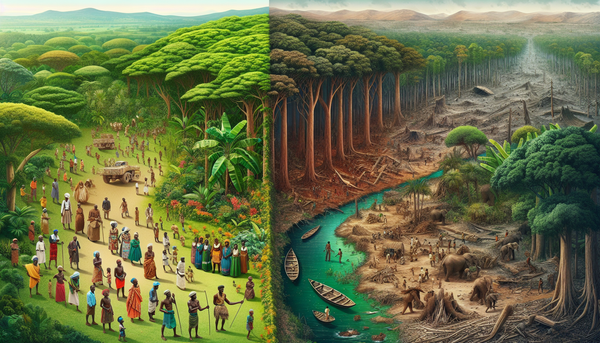Interactions Between African Societies and Indigenous Tribes

Cultural Exchange Through Art and Music
The interplay between African societies and indigenous tribes has fostered a rich tapestry of cultural exchange, particularly in the realms of art and music. This dynamic interaction often serves as a medium for storytelling, spiritual expression, and the preservation of heritage. Traditional African art forms, such as masks and sculptures, have influenced the artistic practices of indigenous communities, leading to the incorporation of unique designs and themes that reflect local customs and narratives.
Conversely, indigenous art has also found its way into African traditions, with motifs and techniques being absorbed and adapted. For instance, the use of natural pigments and organic materials in the creation of artworks showcases a shared understanding of the environment and local resources.
Musically, the convergence of rhythms, instruments, and singing styles has resulted in innovative genres that bridge cultural gaps. Instruments like the djembe and kalimba have merged with indigenous sounds, creating hybrid forms that celebrate shared stories and histories. Festivals and communal gatherings often highlight these exchanges, where performances become powerful platforms for uniting diverse groups and enabling cross-cultural understanding. Through art and music, both African societies and indigenous tribes continue to enrich each other, fostering a legacy of creativity and collaboration.
Trade Relationships and Economic Impacts
Trade relationships between African societies and indigenous tribes have played a crucial role in shaping economic landscapes and promoting interconnectivity. These exchanges often involve goods, resources, and cultural products, fostering a sense of mutual dependence and collaboration. Historically, African communities engaged in extensive trade networks that extended beyond their borders, facilitating the movement of agricultural products, textiles, and minerals to indigenous societies.
For instance, items such as millet, cassava, and various herbs from African regions have found their way into indigenous markets, enriching local diets and agricultural practices. In return, indigenous tribes introduced their unique resources—like precious stones, furs, and indigenous crafts—into African economies, leading to economic diversification and innovation.
These trade relationships not only contribute to the exchange of tangible goods but also facilitate the transfer of knowledge and techniques in areas such as agriculture, craftsmanship, and resource management. Consequently, such interactions have had lasting economic impacts, including the development of joint ventures, market expansion, and enhanced bargaining power within regional economies.
Additionally, the fostering of trade has often strengthened social ties and established long-standing partnerships, paving the way for future collaborations and cultural exchanges that continue to influence economic trajectories today.
Conflict and Cooperation in Political Alliances
The intricate relationships between African societies and indigenous tribes have been marked by both conflict and cooperation, particularly in the realm of political alliances. Throughout history, varying interests—including territorial disputes, resource control, and cultural differences—have led to tensions and conflicts. These altercations often arose as different groups vied for dominance, resulting in battles for land and influence that disrupted established social orders.
However, within these complexities, opportunities for cooperation emerged as well. Political alliances were often formed out of necessity, driven by the need for mutual protection against external threats or the desire for economic stability. Such alliances frequently resulted in the establishment of treaties that delineated borders and stipulated trade rights, fostering a sense of unity despite underlying differences.
Moreover, many African societies and indigenous tribes engaged in political marriages and diplomatic negotiations to bolster their cooperative efforts. These alliances often promoted the exchange of ideas, resources, and technologies, facilitating both cultural integration and political stability. While conflicts may have been inevitable, the resulting cooperation fostered long-term relationships that allowed for shared governance models and collaborative conflict resolution strategies. The ebb and flow of these dynamics showcase the resilience and adaptability of societies navigating the delicate balance between discord and unity.
Environmental Management and Shared Sustainability Practices
The relationship between African societies and indigenous tribes has encompassed significant engagement in environmental management and sustainable practices. Both groups have developed intricate understandings of their local ecosystems, often relying on traditional knowledge passed down through generations. This wealth of experience shapes their approaches to resource conservation and land use, reflecting a deep respect for nature and an awareness of the interdependence between humans and their environment.
In many instances, African communities and indigenous tribes have collaborated on sustainable agriculture methods that emphasize biodiversity and soil health. Techniques such as agroforestry, crop rotation, and the use of indigenous seeds promote resilience against climate variability and enhance food security. These shared practices not only improve agricultural yields but also strengthen local economies by fostering self-reliance.
Moreover, collaborative efforts in conservation initiatives, such as wildlife protection and reforestation projects, highlight the necessity of teamwork in addressing environmental challenges. By combining their knowledge and resources, African societies and indigenous tribes have been able to implement effective management strategies that tackle issues like deforestation, land degradation, and habitat loss. This synergy showcases a commitment to sustainable living, reflecting a growing recognition that fostering ecological balance is essential for present and future generations.
Influence of Traditional Medicinal Knowledge
The exchange of traditional medicinal knowledge between African societies and indigenous tribes has significantly enriched healthcare practices in both groups. Throughout history, both cultures have relied on extensive systems of herbal medicine, often passed down through generations, to address various ailments and promote overall well-being. This vast repository of knowledge encompasses the identification of medicinal plants, their preparation, and their applications in healing rituals and daily health practices.
African herbalists and indigenous healers have frequently collaborated to share their insights, resulting in the cross-pollination of healing techniques and remedies. This collaborative spirit not only enhances the diversity of treatments available but also gives rise to integrative healthcare approaches that combine traditional practices with modern medicine. In many communities, this fusion has empowered individuals to take control of their health while preserving essential cultural heritage.
Furthermore, the resurgence of interest in natural remedies has sparked partnerships between traditional healers and scientific researchers, leading to the study of medicinal plants' biochemical properties. This collaboration aims to validate and document the efficacy of traditional treatments, ultimately contributing to broader healthcare solutions. The influence of traditional medicinal knowledge exemplifies how cultural exchanges can lead to more holistic health systems that benefit communities worldwide.
Educational and Language Assimilations
The interactions between African societies and indigenous tribes have given rise to significant educational and language assimilations that underscore the importance of shared knowledge and communication. Both groups have historically valued oral traditions, passing down stories, history, and cultural practices through generations. This emphasis on oral education has facilitated the exchange of ideas and skills, enriching the learning experiences within communities.
As these societies interacted, they often adopted educational practices that incorporated aspects of each other's cultures. For instance, African educational systems have integrated indigenous knowledge into formal and informal learning environments, fostering a curriculum that reflects local realities and values. This blending of educational approaches promotes respect for diverse perspectives and enhances cultural appreciation among younger generations.
Language assimilation presents another important facet of this exchange. Interactions often led to bilingualism or multilingualism, as individuals adopted elements from one another's languages for better communication. This linguistic blending not only strengthens social ties but also enables the preservation of cultural identities within an increasingly globalized world.
Moreover, the growing awareness of the importance of indigenous languages has sparked movements aimed at revitalizing and preserving these languages, ensuring that future generations continue to embrace their rich heritage while engaging with diverse cultures.
Religious Beliefs and Ritual Integrations
The convergence of African societies and indigenous tribes has resulted in rich exchanges of religious beliefs and ritual practices, showcasing the deep spiritual connections that shape their identities. Both groups possess intricate belief systems that emphasize the relationship between the natural world, ancestral spirits, and divine forces. As they interacted, these spiritual traditions often melded, leading to unique syncretic practices that reflect shared values and experiences.
Rituals play a crucial role in both cultures, serving as conduits for community bonding, healing, and the expression of spirituality. African societies and indigenous tribes have frequently adopted elements from one another's rites, from ceremonies celebrating harvests to rituals honoring ancestors. These integrations foster a sense of belonging and cultural continuity while allowing groups to address universal human concerns, such as life, death, and the environment.
Additionally, this blending of religious practices often extends to festivals, music, and dance, where diverse traditions converge to create vibrant communal celebrations. The acknowledgment of multiple belief systems has not only enriched individual spirituality but also promoted tolerance and understanding among different communities. Ultimately, these religious interactions highlight the dynamic nature of culture, illustrating how shared beliefs and rituals can adapt and thrive in a diverse world.



